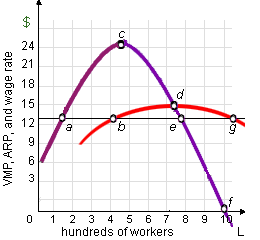Demand for labor of this purely competitive firm in given figure corresponds to: (1) line segment ab. (2) line segment bd. (3) line segment be (4) line segment df. (5) line segment dg.

I need a good answer on the topic of Economics problems. Please give me your suggestion for the same by using above options.